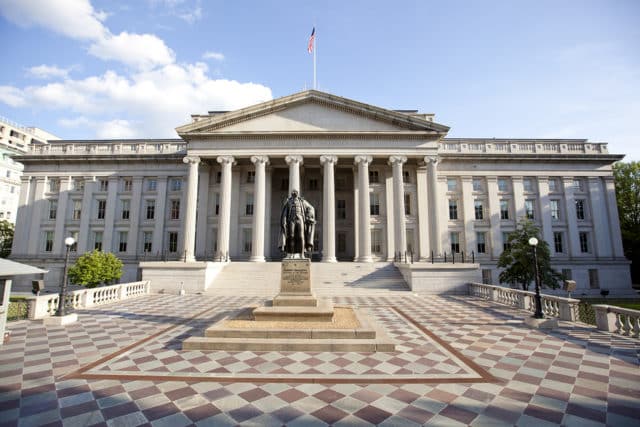In the past, the debt ceiling would usually have been raised. This does not affect the expenditure. It merely ensures that the US can either pay tax or income from a loan to which they are required to pay. It’s about making sure the US can pay their bills.
According to most estimates, it takes about three months for the debt ceiling to be reached again in the US. If the Congress does not raise the ceiling, there would be a failure of the bond commitments. Or the US Treasury Department should immediately cut payments for government programs or employees. This is known as “Partial Government Shutdown”, i.e. the partial decommissioning of the government.
In the summer of 2011, the Republicans demanded that an increase in the debt ceiling should cut expenditures and taxes should not rise further. The Democrats, however, wanted to see higher expenditures that were to be financed by higher taxes, and so the Congress found no agreement for an increase in the debt ceiling.
In May, the issuance of debt securities was suspended in the USA and on 2 August 2011 payments would have been made to the country. At this point, the US Treasury Department would either have become insolvent or it would have had to drastically reduce spending overnight. This would have meant a loss of financial resources for government workers and government programs with certainly catastrophic effects on overall demand. The debt ceiling passed both chambers of the Congress on 1 August at 23:00 and the insolvency was averted.
Worries about the bond markets
The current government seems to be doing so little today that one could almost say “here we go again”. The cost of three-month money to the Ministry of Finance has meanwhile exceeded twelve-month amount. Thus, the curve is inverse for the first time in a long time. The bond market is gradually beginning to worry about a partial and temporary decommissioning.
So what should investors do if they are worried about whether the debt ceiling is not raised and the US is unable to pay their bills? The sale of US government bonds would seem obvious. It should be remembered, however, that US government bond yields actually rose sharply during the suspension period between April and August 2011. Between the end of June and the beginning of July, there was a period of anxiety about a failure to pay and yields rose by about 40 basis points (the 10-year US government bond fell by about 4 points).
Caution is advised
However, it quickly came to a backlash as worries about a US failure to pay a healthy dose of risk aversion in the global markets drove yields on US government bonds again. However, a partial decommissioning cannot be considered positive for the US economy, and if programs are stopped and employees are not paid, unemployment increases, wages decline and overall demand declines.
This would take the wind from the sails worried about an overheating of the US economy and the expectation of further rate hikes. So it is a big problem. It is, however, highly uncertain how the returns on government bonds and, in addition, bond yields that are priced over it will develop. Caution is advised.










